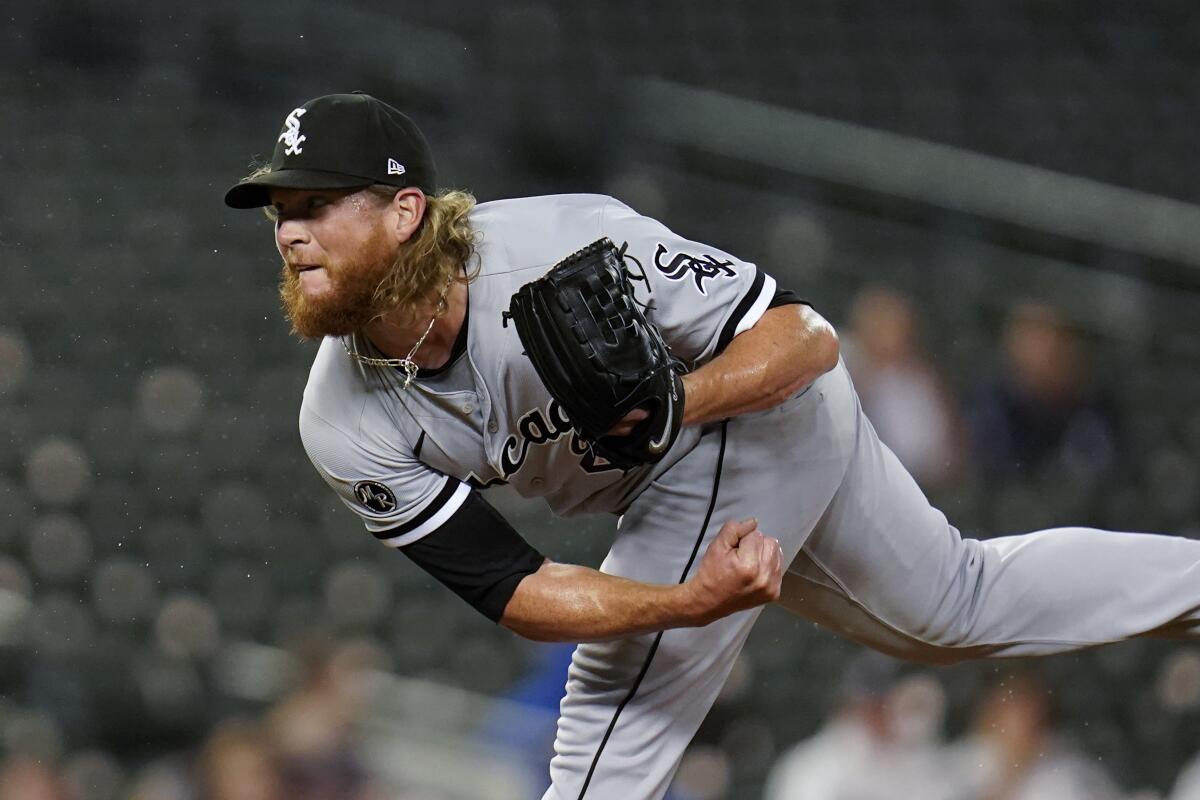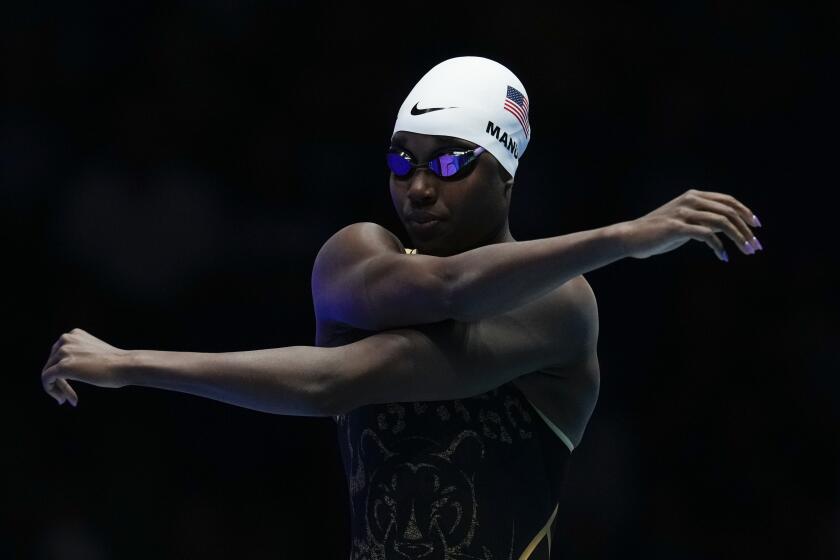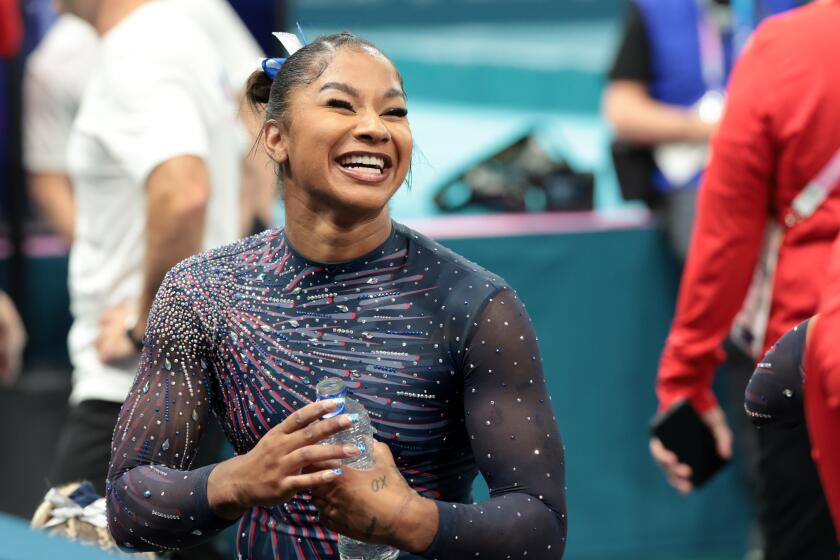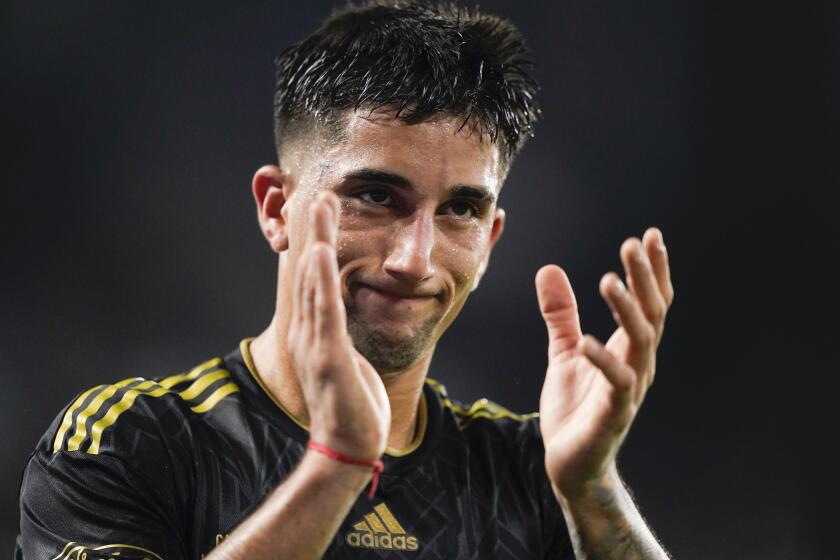Dodgers Dugout: Breaking down the Pollock-Kimbrel trade

Hi, and welcome to another edition of Dodgers Dugout. My name is Houston Mitchell, and the Dodgers open the season this Friday.
The big news since the last newsletter: AJ Pollock was traded to the Chicago White Sox for closer Craig Kimbrel.
Are you a true-blue fan?
Get our Dodgers Dugout newsletter for insights, news and much more.
You may occasionally receive promotional content from the Los Angeles Times.
And make no mistake, Kimbrel will be the closer, bumping Blake Treinen, Brusdar Graterol and Alex Vesia back to more familiar setup roles.
The deal is basically payroll neutral. Pollock will be paid $10 million this season and has a $10-million player option for 2023, or a $5-million buyout. Kimbrel will be paid $16 million this season and will be a free agent when the season ends.
Why the trade?
“It was an opportunity for us to strengthen our pitching and take from an area that we felt had a little bit more depth,” general manager Brandon Gomes said.
Enjoying this newsletter?
Your support helps us deliver the news that matters most. Become a Los Angeles Times subscriber.
Before we give opinions on the trade, let’s take a look at the numbers for the players involved.
AJ Pollock in 2021, .297/.355/.536/137 OPS+ (a career high). Pollock had 27 doubles, 21 homers, 69 RBIs and nine stolen bases. He was second on the team in batting average and doubles and fifth in homers and RBIs. He was third in OPS+. He was easily one of the five best hitters on the team.
Pollock in 2020-21, .290/.342/.547/135 OPS+. In short, Pollock was one of the most underrated hitters on the Dodgers the last two seasons. Those were also the best two seasons of his career.
Craig Kimbrel in 2021: 4-5, 2.26 ERA, 24 saves, five blown saves, inherited runners scored %, 7%. He was traded from the Chicago Cubs to the White Sox during the season. In 36.2 innings with the Cubs, he had an 0.49 ERA. In 23 innings with the White Sox, he had a 5.09 ERA.
Kimbrel in 2020-21: 4-6, 2.88 ERA, 26 saves.
But let’s look at his season ERA since 2017
2017: 1.43
2018: 2.74
2019: 6.53
2020: 5.28
2021: 2.26
For 2 1/2 of the last three seasons, Kimbrel has had a bad, bad ERA.
With Pollock gone, Chris Taylor will get the bulk of starts in left field, with a few starts absorbed by Gavin Lux.
It’s too soon to know if this is a good or bad trade. We’ll know soon depending on the performance of both players. However, I find the trade to be puzzling on the surface. The bullpen wasn’t really a weak point, on the team, starting pitching is. I was very comfortable with Treinen as closer. And Pollock was a good hitter who came through in the clutch often last season. Is he irreplaceable? Of course not. If Edwin Ríos continues to hit during the season the way he has this spring (.389/.522/.904), then the Dodgers won’t miss Pollock at the plate much at all. And if Kimbrel pitches the way he did in the first half of last season, then the bullpen will be better.
But that’s a lot of ifs.
Speaking of Ríos
The good folks at baseball-reference.com do something that’s pretty nifty (does anyone say nifty anymore? Let’s bring that word back). They have a stat called Opponent Quality. They keep track of who pitchers and hitters face in spring training and give them a score on a scale that works like this:
10-Full-time major leaguer
8-Triple A
7-Double A
5-High A
4-Low A
1.5-3-Rookie/Short Season minors
1-Opposing batter is a pitcher
So, using Ríos as an example, every time he faced a pitcher this spring who was a full-time major leaguer in 2021, he gets 10 points. A triple-A player, eight points, and so on. This way, we can see if players are doing well against major leaguers who will probably make the opposing team, or against guys who will end up in the minor leagues. If you face nothing but major leaguers, your score will be 10. The lower the score, the “easier” the competition.
Ríos has put up his amazing spring numbers against an opponent quality of 6.3, which means he has mainly faced pitchers who were in High A or double A last season. That doesn’t necessarily mean he won’t hit well in the season, it’s just another tool we can use to analyze spring training results.
Kimbrel has a spring ERA of 72.00 (That has to be a typo, doesn’t it?) against a opponent quality of 7.6. So his opponents have been mainly double A and triple A batters.
Cody Bellinger has a spring average of .149/.178/.149 against an opponent quality of 7.0. But he’s close, he’s really close to figuring it out.
It’s a fun tool to use.
Rules changes to remember
At one point it was out, but now it’s officially back: Extra innings will again begin with a runner on second base this season. Let’s hope this is the final season for that rule.
Rosters will be 28 through May 1. After that, it will be 26.
If a starting pitcher is also used as the DH, then he can remain as DH even if he is removed as a pitcher. It won’t matter much to the Dodgers, but it will to the Angels and Shohei Ohtani.
Stories you might have missed
Five ways the Kimbrel trade helps the Dodgers
Commentary: Is this the end of the National League as we know it?
Commentary: It’s time for baseball to realign its divisions. Here’s what it should look like
Dodgers observations: Cody Bellinger ‘in a good spot’ with his swing progress
‘He’s just that talented’: Stories from Walker Buehler’s rise as Dodgers ace
‘That slider is death on hitters’: Why Blake Treinen might be too good to be a closer
And finally
Corey Seager reacts after facing the Dodgers in spring training. Watch and listen here.
Until next time...
Have a comment or something you’d like to see in a future Dodgers newsletter? Email me at houston.mitchell@latimes.com, and follow me on Twitter at @latimeshouston. To get this newsletter in your inbox, click here.
Go beyond the scoreboard
Get the latest on L.A.'s teams in the daily Sports Report newsletter.
You may occasionally receive promotional content from the Los Angeles Times.




